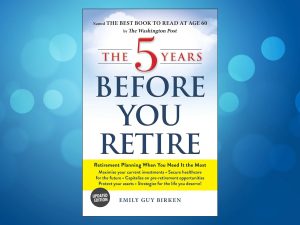Being able to travel to visit family and friends, immerse yourself in local cultures, adventures and experiences can be life enriching. However, taking mum or dad on holidays and excursions when disabilities and medical conditions are involved require a little more thought, planning and patience a times. Here are a few suggestions that you might find helpful:
Accessibility and customer service can vary greatly from place to place. A smooth and seamless travel experience is what we’re all hoping for so communicating needs to family members you’re visiting, checking airport, train, tour operator and rental care websites as well as talking to travel agents and concierges and tourist information centres at your destination is a good place to start.
Another suggestion is to contact a country’s embassy or consulate in Canada to discuss services available for travellers living with disabilities. However, be warned, not all countries are ready to host people in wheelchairs or provide services for those with hearing, visual, or other disabilities.
Booking your flight
Make sure your airline is aware of your needs. Expect to book ahead for services and find out:
• restrictions on the types of oxygen devices.
• limits on the number and types of batteries for mobility aids
• the process for transporting a battery-operated wheelchair or mobility aid
• how to organize wheelchair and mobility assistance, self-service wheelchairs and how to find charging stations for electric mobility devices.
Medical information
Ask the family doctor if the person that you are caring for needs to take precautions during your trip. For instance: what records to carry, how to handle time changes, heat fatigue, being near metal detectors, energy restrictions etc.
Know that pre-existing medical conditions are often not covered by medical insurance. Things to remember include carrying extra medication at all times, checking medication renewals for before and after your trip to make sure you don’t run out, bring a list of medications being taken, finding out if you need a prescription to carry some medication sold over the counter in Canada with you. (even US).
Pack your medication in your carry-on baggage and be sure to always bring documentation that supports your medical condition. All prescription medication should have your name on clearly identified labels. Of note, liquid restrictions do not apply to prescription medication, but the medication must be given to the screening officer separately from your carry-on baggage.
Needles and syringes are usually permitted in carry-on luggage if needed for medical reasons. Medication requiring needles and syringes, should carry an explanation from your health care provider or a medical certificate with you These items may be difficult to purchase abroad, so take enough to last your entire trip and travellers found with needles and syringes and without an adequate explanation could be in serious trouble.
Know that the limit of two carry-on bags does not apply to medical supplies, equipment and mobility aids. However, don’t leave it to the last minute. Make advance arrangements with your air carrier if you need to transport a battery-powered wheelchair or mobility device.
Travelling with a service animal
There may be rules and restrictions related to travelling with a service animal. Keep required documentation for your service animal with you at all times. Research relief areas ahead of time so that they’re easy to find when you are on-site. Obtain a quarantine or permit requirement in your destination country and international health certificate and/or proof of vaccinations will be necessary. There are usually different requirements for emotional support animals.
If you pet isn’t a service animal but is coming along for the ride you’ll need to plan extra time and bring extra supplies for delays. Also know that your pet doesn’t go on the security lane’s conveyor belt. You’ll be asked to take your pet from it’s carrying case and hold it while you send the carrying case through the screening equipment. Don’t expect the screening officer to help or hold your pet while you go through security.
Check-in and security screening
Leave plenty of time to get to through airport check in line-ups—look for self-serve terminals. Think about luggage allowances and carry on. How can you make getting to the boarding gate easier and more efficient. Don’t hesitate to book ahead for help with your mobility aids and carry-on items.
If someone is helping you through the pre-boarding screening process, but is not boarding a flight, they will need a gate pass or authorization from the airline’s check-in counter. They must pass through the same security screening as other passengers.
If you have a pacemaker, insulin pump, ostomy or other medical device, you should advise the officer when you enter the screening area. You should bring medical information with you to verify your medical condition.
Let the screeners know about any mobility, vision, hearing, speech, medical, or other needs. Tell the screening officers if you have a medical implant, artificial limb or mobility aid that may trigger or be affected by the magnetic fields of the metal detection equipment. Ostomy supplies (pouches and flanges) can be packed in your carry-on bag and will be screened at the screening checkpoint. It is recommended to prepare your flanges by cutting them in advance for your trip, in case you need them on board the aircraft. Paste tubes are exempt from the liquid restrictions but must be presented to the screening officer separately from your carry-on baggage.
Use the family or special needs security lines, if available. Screening officers at these lines are trained to offer additional assistance. You can also ask for screening with a hand-held metal detector or full body scanner instead of walking through a metal detector, but a private search room for undergoing a physical search. Remember remain seated while screening officers visually inspect your wheelchair or scooter, or perform explosive trace detection swabs of the cushion
Medical devices such as wheelchairs, crutches, walkers, hearing aids, service animals and CO2 personal oxygen concentrators are permitted through security. Most medical items are permitted on fights but be sure to check the websites of your airline and the airport at your destination to find out what services are available to travellers with disabilities.
If anything happens to your device you will need to make a claim to qualify for reimbursement.
Risk management
Oftentimes, schedule changes, weather events and maintenance issues cause disruptions to otherwise well-made plans. Obviously, these situations are not ideal for either you or the person you are caring for and travelling with. But thinking ahead, picking your travel times carefully and being prepared for everything from a temporary inconvenience to an unscheduled overnight is wise.
Collect moments not things
When the travel bug bites, you’ll want to try and go places near and far. Whether its carefully planning a local trip once a month or going all out once a year for a special vacation, it can be done. After all, having stories to share and living your life by a compass, not a clock just might be what life is really all about.
Are you really ready to travel?
1) Is everyone’s passport valid for at least six months beyond your return date.
2) Arrange travel insurance and check coverage for pre-existing conditions, medical evacuation and repatriation in case of death.
3) Do you need visas and vaccines for your destination?
4) Sign up for the Registration of Canadians Abroad Service so that Global Affairs (GAC) can contact and assist you in case of an emergency.













